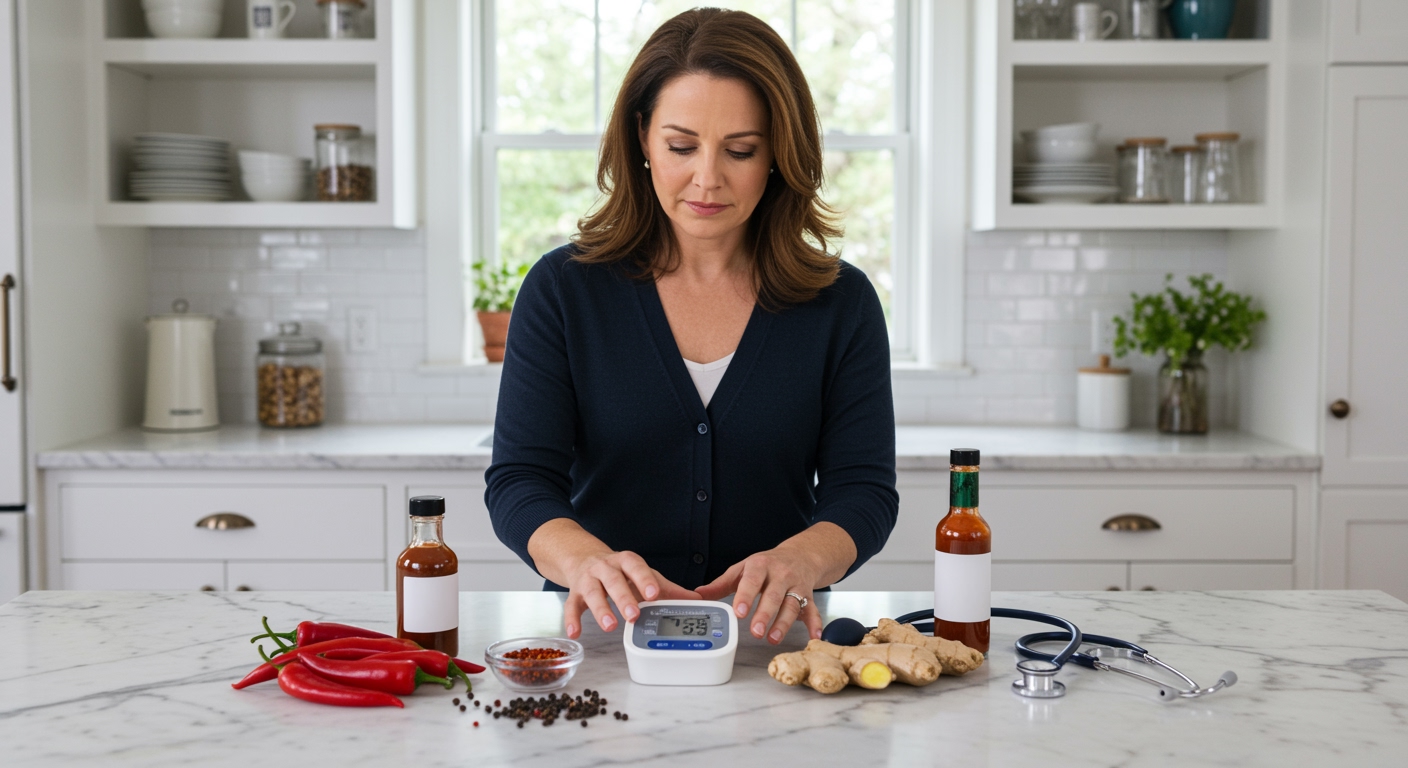✪ Key Takeaway: Pasta can help raise low blood pressure through sodium and carbs, but portion control and smart preparation matter most.
Introduction
Your doctor just told you that your blood pressure is too low, and now you are wondering if eating more pasta could help.
This question makes perfect sense because pasta contains carbohydrates and often comes with salt, both of which can influence your blood pressure readings.
Hi, I am Abdur, your nutrition coach, and today I am going to explain whether pasta should be part of your low blood pressure management strategy.
How Does Pasta Affect Your Blood Pressure?
Pasta influences your blood pressure through several mechanisms that work together in your body.
The carbohydrates in pasta cause your body to release insulin, which helps your kidneys retain more sodium and water.
This process increases your blood volume, which naturally raises your blood pressure readings.
Most commercial pasta contains added salt during processing, and the sauces you add typically contain even more sodium.
Your body responds to this extra sodium by holding onto more water to maintain proper electrolyte balance.
The combination of increased blood volume from both carbs and sodium creates upward pressure on your arterial walls.
Research shows that people with low blood pressure often benefit from moderate increases in both carbohydrate and sodium intake.
✪ Fact: One cup of cooked pasta contains about 200 calories and 40 grams of carbohydrates that can help raise blood pressure.
What Type Of Pasta Works Best For Low Blood Pressure?
Not all pasta types provide the same benefits for people with low blood pressure conditions.
Whole grain pasta offers more nutrients and fiber, but it also digests more slowly than regular white pasta.
The slower digestion means a more gradual rise in blood sugar and insulin, which may provide gentler blood pressure effects.
Regular white pasta creates a faster insulin response, which might give you quicker results if you need immediate blood pressure support.
Egg noodles contain additional protein and fat, which can help stabilize your blood sugar response while still providing carbohydrate benefits.
The shape of pasta matters less than the total amount of carbohydrates you consume in one sitting.
Choose pasta varieties that you actually enjoy eating, because consistency in your eating pattern matters more than perfection in pasta selection.
✪ Pro Tip: Start with whole grain pasta to get more nutrients while still benefiting from the carbohydrate content.
How Much Pasta Should You Eat For Low Blood Pressure?
The right amount of pasta depends on your current blood pressure readings and overall health status.
Most nutrition experts recommend starting with one cup of cooked pasta per meal to see how your body responds.
This portion provides approximately 40 grams of carbohydrates, which is enough to trigger insulin release without overwhelming your system.
Monitor your blood pressure readings for several days after adding pasta to see if you notice any positive changes.
Some people with very low blood pressure may benefit from slightly larger portions, while others might need less.
Your body weight, activity level, and other medications all influence how much pasta will be effective for your situation.
Never dramatically increase your pasta intake all at once, because sudden changes can cause uncomfortable digestive symptoms or blood sugar spikes.
✪ Note: Track your blood pressure readings for one week after adding pasta to identify the optimal portion size.
What Should You Add To Your Pasta For Better Results?
The ingredients you combine with pasta can significantly enhance its blood pressure raising effects.
Adding a moderate amount of sea salt or regular table salt to your pasta water increases the sodium content naturally.
Cheese-based sauces provide both sodium and protein, which can help maintain steady blood sugar levels after eating.
Olive oil contains healthy fats that slow down carbohydrate absorption, preventing rapid blood sugar drops that might lower your pressure.
Garlic and herbs add flavor without extra calories, making your pasta more enjoyable and sustainable to eat regularly.
Avoid adding too many vegetables that are high in potassium, because this mineral can counteract the blood pressure raising effects you want.
Meat or fish additions provide protein that helps stabilize your blood sugar response and keeps you satisfied longer.
✪ Pro Tip: Use a cheese-based sauce with added salt to maximize both sodium and protein benefits for blood pressure support.
When Should You Avoid Pasta For Low Blood Pressure?
Certain health conditions make pasta a poor choice for managing low blood pressure symptoms.
People with diabetes need to be extremely careful about adding more carbohydrates, even for blood pressure management.
The rapid blood sugar spikes from pasta can cause dangerous fluctuations in both glucose and blood pressure readings.
If you have kidney disease, the extra sodium from pasta and sauces might put additional strain on your already compromised organs.
Celiac disease or gluten sensitivity makes traditional wheat pasta completely off-limits, regardless of blood pressure benefits.
Some blood pressure medications work better when you maintain consistent carbohydrate intake, so adding pasta might interfere with your treatment.
Always consult your doctor before making significant dietary changes, especially if you take prescription medications for any chronic conditions.
✪ Note: Check with your healthcare provider before adding pasta if you take blood pressure or diabetes medications.
The Bottom Line
Pasta can be a helpful tool for managing low blood pressure when used correctly and in appropriate portions.
Smart nutrition choices work best when they fit naturally into your lifestyle and support your overall health goals.
I would love to hear about your experiences with pasta and blood pressure management, so please share your questions or feedback in the comments below.
References
At NutritionCrown, we use quality and credible sources to ensure our content is accurate and trustworthy. Below are the sources referenced in creating this article:





